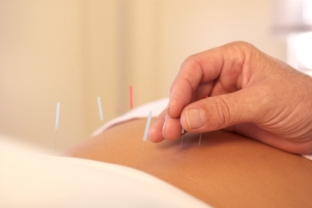Sciatica – it is a disease caused by inflammation, deformity, pinching & nbsp; roots of the spinal cord. Lumbar sciatica – localized pain in the lumbosacral spine. Radiculitis in the lower back can worsen seasonally or manifest itself during heavy physical exertion. For example, when working on a garden plot, many gardeners plant potatoes, the care of which requires skill and considerable physical effort. The severity of gardening tools, open, windswept planting areas, inappropriate clothing and footwear, excessive zeal – here are some conditions under which physical labor can lead to serious consequences and unpleasant memories of the dacha.
Lumbar sciatica: types of sciatica and treatments
Sciatica deprives us of the opportunity to fully move. You can restore grace and ease of movement in the simplest ways:
- Do not get cold.
- Exercise daily.
- Don't overwork.
- Visit the pool.
- Do yoga – the most useful and affordable way for many to improve back health.
Sciatica can be of several types, each of which requires a special approach in treatment. Distinguish sciatica:
- lumbar,
- cervical,
- chest,
- cervicothoracic,
- cervicobrachial.
Lumbar sciatica manifests itself in the lumbar region of the back. Severe pain does not allow either to bend or unbend, and the patient for the first time after the attack cannot move. In such cases, it is better to try to lie down and straighten up as the pain decreases. Finally unbending, you need to lie on your stomach and apply an anesthetic ointment to the sore area of the lumbar region. Pharmacies offer a wide selection of ointments that quickly and reliably relieve pain shock. However, relying only on drugs is not worth it.
Symptoms of lumbar sciatica: find and neutralize
Very few people go to the doctor for lumbar sciatica. Despite the prevalence of this phenomenon, it is not considered a disease. As a rule, one consultation with a physiotherapist or neurologist is sufficient for a patient who has acquired lumbar sciatica not due to an accident injury. Further visits are made only to the pharmacy – replenish the stock of ointments recommended by the doctor.
In more severe cases of back or spinal injury, periodic observation with the appropriate physician is mandatory. In such cases, visits to the doctor become regular in order to monitor the response to treatment and prevent complications.
are as follows:
severe pain attacks;- poor flexibility of the lumbar vertebrae;
- discomfort after sitting or standing for a long time;
- dizziness;
- general weakness;
- Sensation disturbance.
– irritation of the major sciatic nerve, pain or discomfort at the level of the lumbar vertebrae, radiating pain through the small pelvis to the legs and reaching the feet. The most pronounced
symptoms in lumbar sciatica– sciatica – one-sided severe pain in the buttock, thigh or foot.
Causesfor complaints of lumbar sciatica can be:
Herniated disc.- Disk protrusion.
- Degenerative changes in the vertebrae.
- Arthritis.
- Stenosis of the spinal canal.
- Compression fracture.
- Foraminal stenosis.
- Spondylolisthesis.
- Because lumbar sciatica is neurological in nature, sometimes symptomatic pain can also occur with severe stress.
Testing muscle sensitivity and checking reflexes helps to identify a tendency to lumbar sciatica in apparently healthy people.
Lumbar sciatica – diagnosis of possible complications at home
There are a few simple physiological tests that can help identify a predisposition to lumbar sciatica at an early stage. Simple exercises performed in the supine position are available to everyone who wants to assess their degree of risk.
Exercise 1.Lie on your back (preferably on the floor if the bed is too soft) and raise one leg vertically to the floor. If doing leg raises is painful or uncomfortable due to pulling sensations inside the limb, you are at risk.
Exercise 2.Stand up straight. Take one leg back: if you feel discomfort or severe pain, it's time to take action.
Exercise 3. Lie on your back, press your stomach below your navel. If you feel like "gives in the back", you may have lumbar sciatica.
A consultation with a doctor is necessary in case of inflammation of the roots of the nerves of the spine caused by a virus or infection – it can be primary or secondary sciatica.
Virus-induced sciatica will be
primary. Sciatica detected against the background of another disease is called
secondary.For the manifestation of lumbar sciatica, age does not matter - it is enough just to overwork or freeze.
At the hospital, the doctor may order a tomography or X-ray procedure for the patient.
The following methods of neutralization help well with lumbar sciatica:
Massage.
- Manual therapy.
- Acupuncture.
- Hirudotherapy.
- Hardware methods of physiotherapy.
- Sanatorium treatment.
 Following simple rules to maintain health, you will not become a hostage to sciatica in the lower back.
Following simple rules to maintain health, you will not become a hostage to sciatica in the lower back.






Add a comment